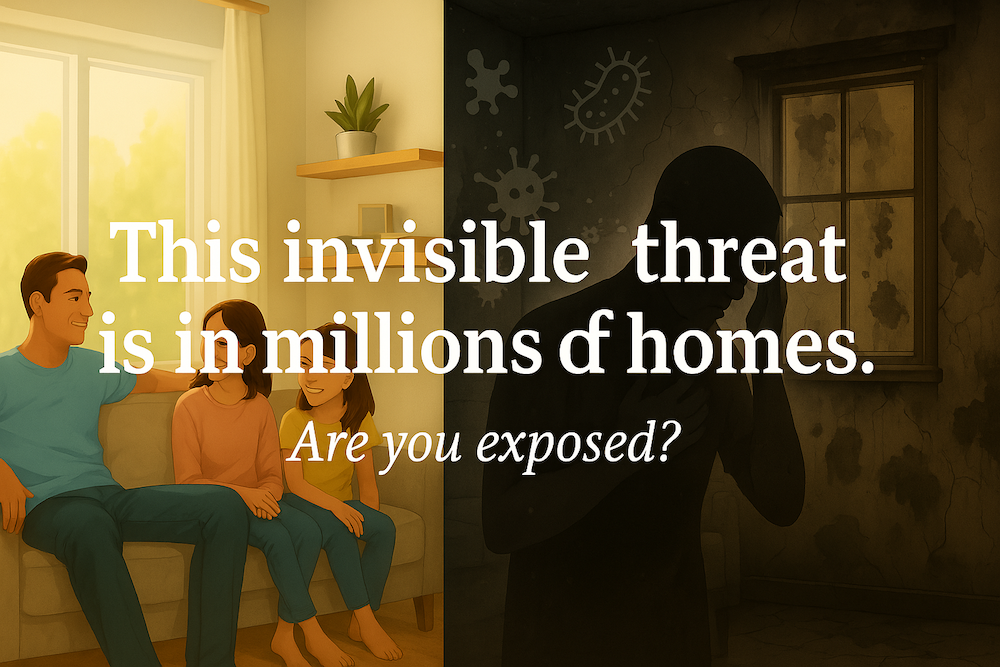What Most People Get Wrong About Mycotoxins and Mold Exposure
If you've ever wondered whether mold in your home or workplace could be making you sick, you're not alone. But here's the surprising truth: it's not just mold — and it's not just mycotoxins.
In this article, we’ll break down what you really need to know about water-damaged buildings, mycotoxins, and a complex illness called Chronic Inflammatory Response Syndrome (CIRS). We’ll also explore why modern testing methods are changing the game for people who’ve been told “it’s all in your head.”
Note: The content of this article is summarized from a research paper written by Dr. Ritchie C. Shoemaker.
If you'd like to see the full 36 page research paper, you can download it from https://esmed.org/MRA/mra/article/view/2358
What Are Mycotoxins?
Mycotoxins are toxic chemicals produced by certain types of mold. They're often found in water-damaged homes and buildings and can cause a wide range of health problems — from headaches and fatigue to memory issues and breathing problems.
But here’s the thing: mycotoxins are only part of the picture.
The Real Culprits in Mold-Related Illness
New scientific research reveals that people exposed to water-damaged buildings (WDBs) are not just reacting to mold spores or mycotoxins. Instead, they’re often reacting to a toxic mix of microbes including:
- Actinobacteria – tiny bacteria that release harmful chemicals and can trigger serious immune reactions
- Endotoxins – toxic substances released by gram-negative bacteria
- Fungal fragments and mold metabolites – even dead mold parts can cause inflammation
- Other microbial toxins – which work together to overwhelm your body’s defenses
These toxins don’t just irritate your lungs — they can affect your brain, immune system, hormones, and energy production.
Chronic Inflammatory Response Syndrome (CIRS): The Missing Diagnosis
Exposure to these environmental triggers can lead to Chronic Inflammatory Response Syndrome (CIRS) — a condition where the immune system stays stuck in overdrive, even after you're out of the moldy environment.
Common CIRS symptoms include:
- Fatigue and brain fog
- Mood swings and anxiety
- Shortness of breath
- Muscle aches and joint pain
- Sinus issues and headaches
- Light sensitivity or visual problems
If you’ve seen multiple doctors and still don’t have answers, CIRS might be the missing link.
Why Traditional Mold Testing Falls Short
Most mold inspections rely on air sampling or visual inspections. Unfortunately, these outdated methods miss the bigger picture.
Problems with standard mold testing:
- Doesn’t detect bacteria or endotoxins
- Can miss hidden sources of mold behind walls
- Only measures what's in the air at the time of testing
- Doesn’t assess how your body is reacting
New Testing Methods for Mold and Mycotoxin Exposure
Thanks to advances in genetic testing and molecular diagnostics, there are now more accurate ways to identify harmful exposures and measure your body’s response.
✅ Next-Generation Sequencing (NGS):
Detects the full range of microbes in dust samples, including bacteria, mold, and fungi.
✅ GENIE Transcriptomic Testing:
Analyzes your gene expression to see how your immune system is reacting to biotoxins. It's like a fingerprint for CIRS.
✅ HERTSMI-2 Scoring:
A scoring system for identifying high-risk mold species in your home environment.
These tools can help determine:
- Whether your symptoms are from a water-damaged building
- Which microbes are causing immune stress
- Whether a building is safe to reoccupy after remediation
How to Know If a Building Is Making You Sick
Ask yourself:
- Do you feel worse in one particular home or office and better when you’re away?
- Have you had water damage, leaks, or musty smells?
- Have standard mold tests come back “normal” — but you still feel off?
- Are you experiencing symptoms from multiple body systems?
If so, it’s time to go deeper than traditional mold testing.
The Future of Mold Illness Diagnosis and Treatment
We’re entering a new era of understanding when it comes to mold and biotoxin-related illness. By using science-backed methods like transcriptomics, we can finally move past vague symptoms and guesswork — and toward real answers and real recovery.
Final Thoughts: Don’t Settle for “It’s Just Mold”
If you suspect your environment is making you sick, trust your instincts — but make sure you're working with professionals who use modern, science-based testing methods. Mycotoxins may be the most well-known culprit, but bacteria and other invisible toxins are often the real cause of persistent illness.
Getting to the root of the problem could be the first step to finally feeling better.
Citations
Shoemaker, R., V, N., A, H., M, v., S, M., & D, L. 2021 Mar 21. Newer Molecular Methods Bring New Insights into Human- And Building-Health Risk Assessments from Water-Damaged Buildings: Defining Exposure and Reactivity, the Two Sides of Causation of CIRS-WDB Illness. Medical Research Archives. [Online] 9:3
